Sir John Parker, author of an independent report on the National Shipbuilding Strategy, has indicated that the fleet will fall below 13 frigates unless the Type 31 Frigate build starts soon.
Dr Julian Lewis, Chair of the Defence Committee, asked during a session on the National Shipbuilding Strategy:
“So what you are saying—and this is a critical point—is that unless we start building the Type 31e frigates in parallel with the Type 26s, there is little chance of not reducing below our existing figure of 13 frigates all told.
That, I must say, fits in with the projections I have seen and it follows from that, therefore, that we have to consider the best way of building two classes of frigates in parallel, rather than in succession.”
Sir John Parker responded with one word:
“Correct.”
Michael Fallon however told BBC Radio Scotland towards the end of last year that the Type 31 build would begin after that of the Type 26:
“Nobody is shortchanging the Clyde. This is a huge moment for the Clyde; we’re confirming we’re going ahead with the steel cut next summer, earlier than expected. The first eight will be the Type 26 combat ships.
After that, the Clyde will be building a lighter frigate and we will end up with a fleet that is larger than the fleet at the moment.”
The build plan for the “at least five” Type 31 Frigates is expected to follow a similar pattern to that of the Queen Elizabeth carriers and early Type 45 Destroyers in that blocks will be built in yards around the UK and assembled on the Clyde.
Modern shipbuilding makes considerable use of prefabricated sections. Entire multi-deck segments of the hull may be built elsewhere around the UK, transported to the building dock or slipway, then lifted into place. This is known as “block construction”.
Yards pre-install equipment, pipes, electrical cables and any other components within the blocks, to minimise the effort needed to assemble or install components deep within the hull once it is welded together.
Referring to the Type 31 Frigate, Sir John said:
“The very important thing is that, whatever design is chosen, it has got to have adaptable features for the export market. We have pointed to one British design by BMT the consultants—Venator. They went out, talked to a lot of overseas navies about their requirements and produced modular choices. They have a standard platform, more or less in line with what we conceived.
We met them and discovered that they had already developed such a design. The design is close to 3,800 or 4,000 tonnes. They created a design with modular choices for weapons systems, communications systems, etc., which you can fit on day 1 and retrofit later. There is great flexibility, and they have introduced a lot of plug and play. It is a very modern concept. An important point, because the yards that get the blocks to build have to completely outfit them—it is not just a sticky box—is that the systems engineering has to be done within the blocks as far as possible, so you have minimum join-up of systems. You will quite clearly have some, but you try to minimise that.”
The decline in the frigate fleet will happen as the 13 Type 23’s are phased out.


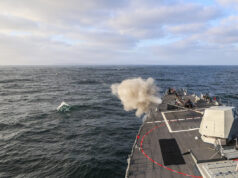
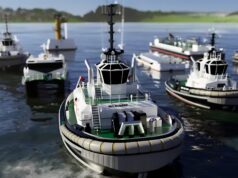
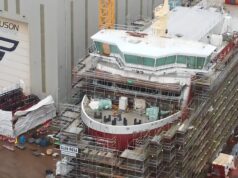
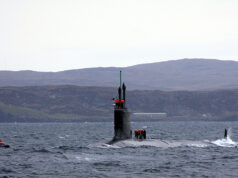
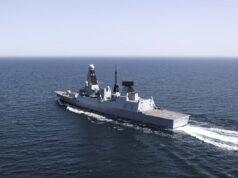

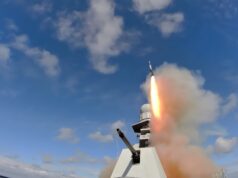
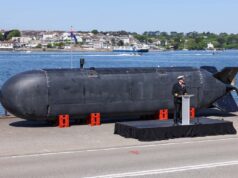
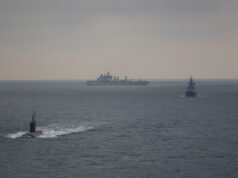
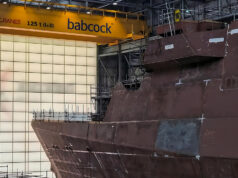

This is true but misleading. The planned rate of retirement of the Type 23 frigates is such that it will be 2030 before we dip under thirteen provided that the Type 26s are built as fast as the Type 23sare retired. I bet some of the Type 31s are built in English yards, anyway. I don’t think the entire Type 26 build will be complete before work starts on the Type 31s. Mr. Fallon often makes illogical statements. The truth is that there will be a huge pressure to provide escorts for two carrier battle groups and the solution will be an early start to the Type 31 build.
Well, I liked Hammond, kind of quiet, humorous and competent. Unlike Fallon. But much as I’d like to see the work going to English yards if it can’t come to the Clyde, it seems to me that’s not the plan. Skills are a problem, and if Clyde workers are going to have to move anyway, perhaps they might as well move to Canada where there are already attempts to poach them.
And perhaps the UK will be buying warships off the shelf from anywhere in the not too distant future. After all, the “light frigate”, C2 as originally planned, doesn’t need to be the sharpest tool in the fleet.
yards should be put in direct competiion for speed of construction, let birkenhead, pompey and harland
wolf to getcontracts and see who the best yards are. build fastest get next contract
Ffs building faster doesn’t guarantee build quality. The complexities of naval ships are massive.
I do worry about our numbers in any conflict or disaster as the time scale building and testing these vessels and not to mention the funding can bankrupt a country..
Put up tax and NI to fund the NHS and forces.
It’s a must
Also scrap foreign aid.
Order 20. Clyde gets its ships and the other yards can create skills to hopefully get foreign orders for whatever.
Reality is Type 31 may never happen. Just an announcement to ease blow of Type 26 reductions.
Maybe. West might have been right about the MOD running out of money. On the other hand it could be just pre-budget manoeuvering “give us more money or we’ll be defenceless”.
Fallon’s comment is ambiguous. They may need to have some later T31s built on the Clyde after T26, if T45 replacement doesn’t follow on directly. But that could mean the additional hulls beyond the initial 5 that he hints at. So his statement doesn’t preclude the initial T31s being built concurrently with T26 at different yards, per Sir John’s recommendation. Given that HMG has said that T26 work will take the Clyde through to the mid 2030s, it must be true that T31 does need to be built concurrently if escort numbers aren’t to fall well below 19. I can’t see any way that the T23s could be extended any further than they have been already. And a drop below 19 escorts must be politically untenable given the flak HMG already takes on numbers – along with its commitment to “grow the fleet”. For these reasons I suspect we may well see something about concurrent T31 orders in the Shipbuilding Strategy.
This is an interesting and worrying story. The French have a much larger force than ours now and are modernising.
We really do need a 32-40 complex warship fleet and these should be as multi-role as possible. I think we should build 7 T26 now and a further 6 later to replace the T45’s (fit the T26 with Sampson though) as for the T31 I think we need 26 of these. together this would provide the following
Group: T26 T31 JSS FFT SSN SSBN
CBG 1: 2 4 2 2 0 0
CBG 2: 2 4 2 2 0 0
SQN 1: 2 4 1 1 2 1
SQN 2: 2 4 1 1 2 1
SQN 3: 2 4 1 1 2 1
SQN 4: 2 4 1 1 2 1
Maint: 1 2 1 1 1 1
TOTAL: 13 26 9 9 9 4
This gives the UK an 80 ship combat force (including RFA ships) and allows for a 1 on / 1 on roster for all assets, or a more flexible 2 on / 1 off / 1 going on roster.
T45’s and T26’s are the Arleigh burke/Fremm
T31’s are the FTI/ LCS/ Meko/Formidable.
JSS is the Mistral/Karel Doorman Solid Support and Amphib/Mothership
FFT is our new Tide class
25 years is needed to move to the above and £3bn capex per annum, which allows for a comprehensive weapons fit and the required smaller and unmanned vessels to be procured as well
Sorry to bang on about this but the French are leaving us standing on this and the designs of their vessels (FTI/C-sword 90/Gowind).
MOD and government need to sort this out and get better value for money.
Test
Proibably not!
Sorry, block quote doesn’t work!
Nice fantasy fleet, but you also need to factor in some fantasy sailors.
As a stopgap,extend the life of the last build Type 23’s.
The disconnect between what the Navy needs taking into account realistic budgetary constraints, and what the the Whitehall/Westminster team provide is not only disturbing but quite bizarre. Hige and critical gaps in vital capability are about to be/are lost-no replacement for Sea Skua,no replacement for Harpoon, missing and faulty equipment on Type 45’s,overpriced underarmed OPV’s(that could have acted as low grade frigates) etc etc.. Add to this endless delays,long leads, interminable expensive feasability studies etc etc.
I try to remain optimistic but sometimes it’s very difficult….
Really interesting debate here. I am hoping the budget on Wednesday will release more funds to defence. The RN desperately needs to get on and start building warships again.
The pending frigate crises has been long foreseen and predicted.
All the recommendations of the national shipbuilding plan need implementing in full. Setting aside £3 billion per year long-term for warship construction is a necessity.
Simple maths time: All 6 type 45s need £100 million spent to equip with mk41 vl systems, power supply problems. We might as well commit to buying the long-range antiship missile, tomahawk, asroc now. Or as a stop gap measure with harpoon leaving service the Norwegian antiship missile, which is potentially able to be fitted into mk41 cells.
Hopefully funds can be found to order the type 31e in adequate numbers I think limited the programme to £2-3 billion is likely to lead to reduced numbers and inadequate high-end capability.
the type 31e is going to be a quick programme, needing rapid ordering, using proven weapons and sensors. Modular construction from around the uk using Portsmouth, appledore and birkenhead is going to be necessary. Final assembly on the Clyde if necessary or if unable too due to type 26 programme then give the programme to Appledore who have the most recent experience building warships close to this size (Irish navy Samuel Beckett class).
weapons fit, sea ceptor, internal lightweight torpedo launcher and magazine as per type 23s. Medium calibre gun. Hangar for lynx but flight deck able to take a merlin. 12-16 surface strike/ antiship missiles, bow mounted sonar with option to fit towed array, some form of antmine anti torpedo defence ( the Italians have a very interesting system we should adopt for type 26+31e), 1Xciws phalanx 1B, finally 2x 30mm guns. this could be done on a hull form of 4,500-5000 tons aka enlarged venator 110 design.
Accommodation for 2-3 Royal marine platoons so the type can be used for raids and close-in warfare.
Cost per hull £300 million so £4 billion with developmental costs should provide 12 much needed hulls.
Mr Bell
£3bn p.a. For shipbuilding would allow th RN to commit to a proper fleet of 32-40 escorts built over 25 years with proper weapons fit, radars, captas on all escorts and provide some change.
2 CVF – £4bn each = £8bn
13 T26 Escorts – £800m each = £10.4bn
26 T31 Escorts – £600m each = £15.6bn
9 Astutes – £1.25bn each = £11.25bn
4 Successor – £4bn each = £16bn
11 Tankers (FFT) – £200m each = £2.2bn
9 Joint Support Ships – £400m each =£3.6bn. (Enhanced Karel Doorman – Aegir hull)
4 Specialist ships – £1bn total
500 small vessels – £1bn (64 safeboats mk6, 128 CB90’s, 128 Atlas Arcims MHCV, 200 Pac’s)
Total cost of the above Circa £70bn spread over 25 years which allows £5bn contingency but includes 2 carriers. Spread this over the 50 year cycle of the carriers and it works out even cheaper.
This would give the RN 2 CBG’s with 2 T26 and 4 T31 escorts as well as 4 squadrons of the same for other duties and a maintenance squadron.
So £3bn p.a. Can get us an awful lot of equipment if planned and spent properly – buy in tranches of 6/7 of a type and evolve over time instead of trying to create a new design over 20 years (T26).
To make this work there has to be a commitment to fleet management and a move to replacing instead of extending a ships life past its intended design envelope.
Fantasy fleet time again. I won’t today though.
But I’d like to see each warship without side hoisted RHIBs (too small to be good out at sea) and lifting davits (too much space and top weight). Instead they should have two stern ramps and two CB90s. It’s smaller to have two ramps instead of one and a lifting system.
I’d then like to see modular kits available such as (1) MCM sonar and autopilot, etc, (2) helo type dipping sonar for inshore ASW or active pinging away from the main ship, (3) towed sonar platform. Two 16m CB90s have a lot of potential and if carried as I suggest thay are not harder to carry around than two 7m RHIBs.
The really frustrating thing is the wanton waste of the Foreign Aid budget. It needs to be cut and sooner rather than later.
One way of looking at it that we could build 4 Queen Elizabeth class carriers A YEAR with the spend.
In a few years we could reequip all three services from top down completely.
How many schools and Hospitals is also staggering.
Tim, you’re right and I apologise, but its just infuriating how the MOD can get these things so wrong.
My point is the £3bn p.a. Is actually the golden number for naval shipbuilding at this point in time and if committed and stable would provide the right drumbeat (3 ships p.a.) and the right fleet (whatever that may look like). Compromises have to be made along the way and for me the major decisions are around have a multi purpose solid stores/amphibious fleet (upgraded Karel Doorman) and standardising on 6-8 hull forms across the whole fleet, to reduce cost.
Standardisation is good from a cost perspective as buying 200 8 cell Mk41 VLS should be cheaper than purchasing 30 and from a maintenance point of view less difference.
This does mean we have enhanced T31’s doing constabulary work, but it also means we have a bette fighting force.
Lastly and most importantly new for old every time – no life extensions, its bad for the budget, bad for moral, bad for fighting capability and bad for industry, yet that is where we are at at the moment.
So apologies for the FF, but it does show quite clearly what can be achieved with £3bn p.a. Spent on shipbuilding alone. Ultimately the RN needs a budget of circa £10bn p.a. To run in a configuration that would meet the above. Also I think my FF would win against most current forces, not sure about the current RN, France definitely has the edge on us I think.
No need to apolgise for FF. I’d love to have £3bn spent on a decent fleet. Back in the real world though here are the UK and FR ship numbers over 100 tonnes. Under 1,000 tonnes in brackets. Data from Wikipedia.
Subs: UK = 7 + 4. FR= 6 + 4.
Carriers: UK = 2 building but use only 1. FR = 1.
Amphibs: UK = 2 but use only 1, + 1 to retire early. FR = 3.
AAW Escorts: UK = 6. FR = 4 + 2 building.
ASW Escorts: UK = 8. FR = 3 + 3 building + 5 to retire.
GP Escorts: UK = 5. FR = 11.
OPV: UK = 4 + 5 building + ? to retire. FR = 13 (+4)
MCMV: UK = (15). FR = (18).
Coast guard: UKBA = (5). FR = (6).
Survey/Support/Research/Training: UK = 8. FR = 21 (+15).
Auxillary: 13 + 4 building. FR = 3
There’s not much difference in the numbers of big fighting ships but FR have more GP escorts and OPVs. UK has a lot more Auxillaries especially Bay and Point class ships but FR has a lot more support and training ships.
If UK operated both carriers with at least 2 sqns of planes then UK is better, but one or two Exocets would level it and our QEs don’t even carry CAMM whereas the CDG has Aster 15. If UK had 20 simple GP escorts instead of 5 older T23s then we would easily be better and those Exocets might not hit something quite so valuable.
It looks like the teeth of the Russian Northern Fleet consists of about nine ssns, a half dozen diesel subs and about ten large surface combatants. The collective naval strength of the Northern European countries ought to be sufficient to limit Russian operations and engage in Libya-type operations quite effectively – especially when the U.K. fields its carriers. I don’t think that Britain needs a much larger navy. It just needs a few more escorts and a decent anti-ship missile. The USN should focus heavily on the Pacific, in my opinion.
And the Med ? The Straits of Hormuz off Arabia and Iran ? Remember also to catch the Russian Northern Fleet you have to split your assets between patrolling near Kaliningrad and Murmansk.
Sorry to disagree Mr bowman. But back in the 1990s the joint chiefs of staff and first sea lord said the golden number for the RN as an absolute minimum of available escort class warships is 26. This is the minimum number needed to fulfill commitments and provide a small reserve to allow time out for training, refit and other adhoc tasking that comes up. The 26 hull requirement has been reiterated time and time again and ignored by Whitehall and mandarins in parliament.
We can afford and need a slightly larger RN. The national shipbuilding strategy sets out how to achieve this requirement very clearly.
Paceman is right as well a continual budget of £3 billion a year will see the RNback on a from and secure footing, just needs governmental support.
iIn the very least the RN must get funding for 4 key projects not already earmarked.
1) sort out type 45 destroyers so they can fulfill their potential as heavy destroyers/ light cruisers. So mk41 strike length silos, power and propulsion, 5inch gun.
2) order type 31 frigate in adequate numbers 10 a minimum, 12-15 preferable.
3) order an urgent replacement for sea skua and harpoon. It is madness for the RN not to be able to sink enemy warships. The Norwegian anti ship missile is a proven advanced weapon and can fulfill both roles
4) order an off the shelf replacement for hms ocean, either HMAS Canberra class or a copy of the Italian new LPHD.
Mr Bell
For item 4 check out the Karel Doorman or Mistral class – both can replace HMS Ocean and in the case of K Doorman it can double up as a solid support ship.
Excellent value if you ask me
Mr. Bell, what the joint chiefs said twenty-five years ago may still be true but it probably isn’t. In the mid-90s we had a navy focused on ASW – a reflection of an entirely different threat environment. Our escorts were much less capable, too. Any reasonable determination of required fleet strength would have to consider current threats, current technology, the new carrier strike focus and the strength and reliability of allied nations.
The fleet must be of sufficient size to counter any threat, as part of a coalition or even acting alone. The current size of the fleet is the product of out of date threat estimation. and criminal complacency, Since the “lets cut it back its all over” days of the 1990s and early 2000s new threats and old threats reemerged. The problem has arose when geo political or other change, has outpaced our capacity to re arm, re build or prepare within sufficient time. Of course a front line unit designed to counter a modern adversary will take years of development and substantial cost. However, retaining a credible reserve of trained personnel and primary assets could have filled those gaps. The ability to reccomission vessels with a prepared crew could have released more competent vessels from non specific/lesser duties. I have colleagues with marine officers certification who are unemployed in part due to foreign seafarers working in British territorial waters. The demise of the offshore industry has placed a wealth of expertise on the doorsteps of any ship yard or recruitment office. If you want peace…..prepare for war!
The fleet must be of sufficient size to counter any threat, as part of a coalition or even acting alone. The current size of the fleet is the product of out of date threat estimation. and criminal complacency, Since the “lets cut it back its all over” days of the 1990s and early 2000s new threats and old threats reemerged. The problem has arose when geo political or other change, has outpaced our capacity to re arm, re build or prepare within sufficient time. Of course a front line unit designed to counter a modern adversary will take years of development and substantial cost. However, retaining a credible reserve of trained personnel and primary assets could have filled those gaps. The ability to reccomission vessels with a prepared crew could have released more competent vessels from non specific/lesser duties. I have colleagues with marine officers certification who are unemployed in part due to foreign seafarers working in British territorial waters. The demise of the offshore industry has placed a wealth of expertise on the doorsteps of any ship yard or recruitment office.
Its time time get value for money ad hulls in the water. If that means buying foreign boats already proven then its maybe time to do it.